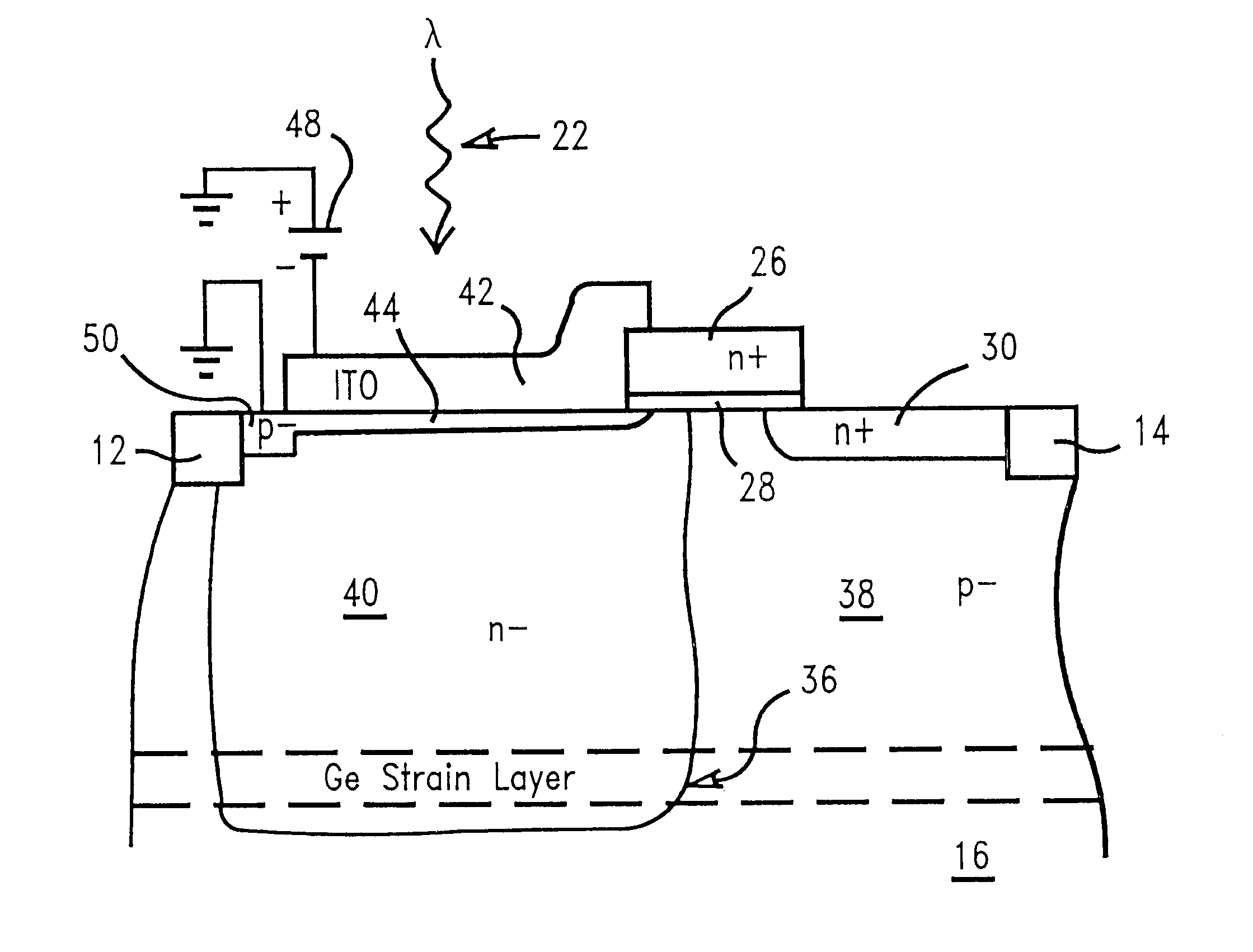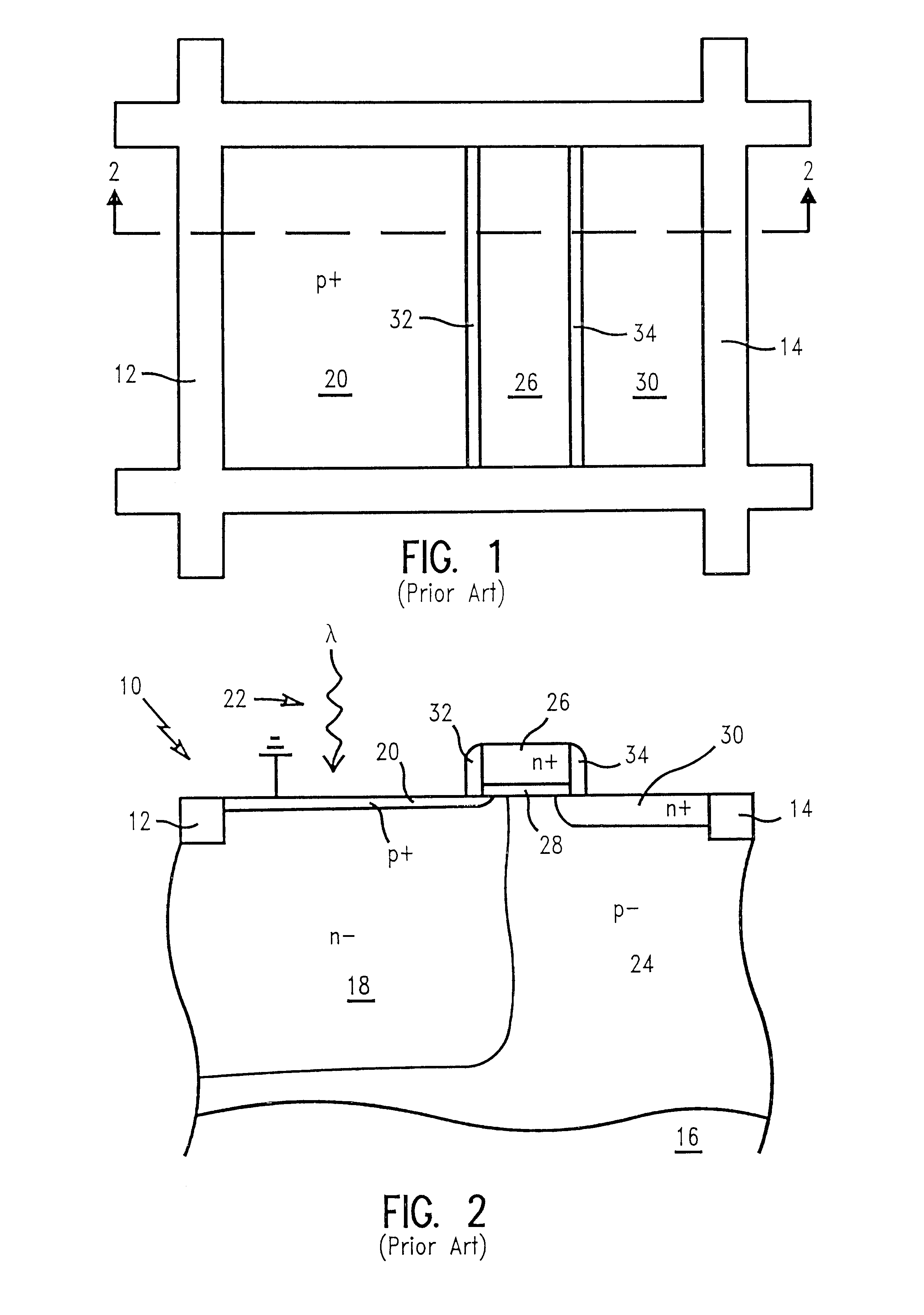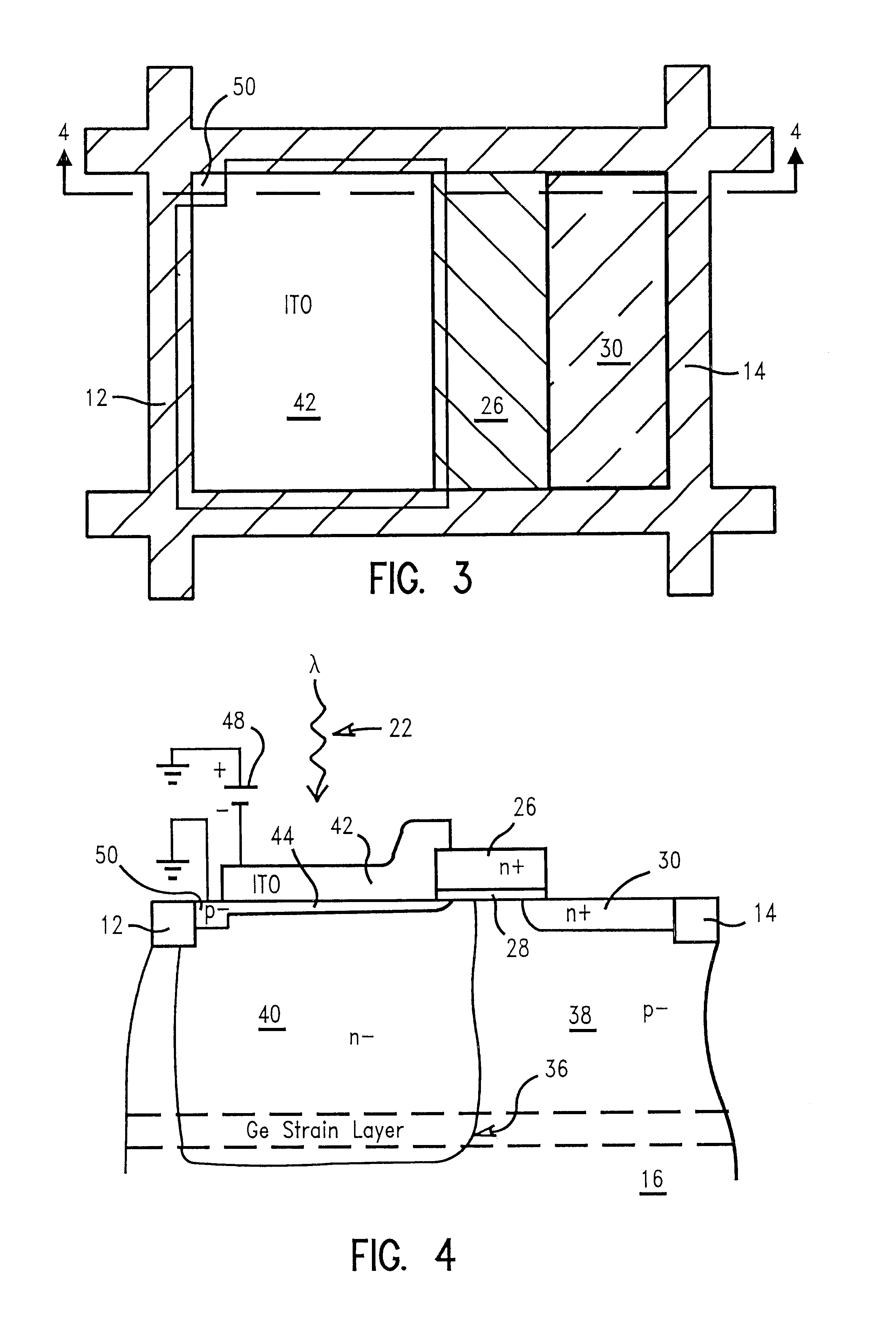Method of detecting electromagnetic radiation with bandgap engineered active pixel cell design
a technology of active pixel cell and bandgap, which is applied in the direction of material analysis, radio frequency control devices, instruments, etc., can solve the problems of short wavelength radiation being easily absorbed in the pinning layer, still thick enough to absorb an undetectable high proportion, and retaining the electron in the photosensitive region. , to achieve the effect of improving blue light sensitivity and decreasing the thickness of the pinning layer
- Summary
- Abstract
- Description
- Claims
- Application Information
AI Technical Summary
Benefits of technology
Problems solved by technology
Method used
Image
Examples
Embodiment Construction
)
In describing the preferred embodiment of the present invention, reference will be made herein to FIGS. 1-4 of the drawings in which like numerals refer to like features of the invention.
The benefits of the invention shown in FIGS. 3 and 4 will best be understood by first considering the construction of the prior art APS device shown in FIGS. 1 and 2. The prior art device shown there is generally indicated with reference numeral 10. This cell is separated from identical adjacent APS cells in an array of such cells which are located above, below and to either side, by a shallow trench isolation (STI) barrier. The left and right sides of the surrounding STI barrier are indicated with reference numerals 12 and 14 respectively.
The prior art APS device 10 is constructed on a substrate 16 and includes a relatively deep photosensitive region 18 of n- semiconductor material. A pinning layer 20 of p+ semiconductor material is grounded and is used to remove holes generated in the photosensit...
PUM
| Property | Measurement | Unit |
|---|---|---|
| depth | aaaaa | aaaaa |
| thickness | aaaaa | aaaaa |
| thickness | aaaaa | aaaaa |
Abstract
Description
Claims
Application Information
 Login to View More
Login to View More - R&D
- Intellectual Property
- Life Sciences
- Materials
- Tech Scout
- Unparalleled Data Quality
- Higher Quality Content
- 60% Fewer Hallucinations
Browse by: Latest US Patents, China's latest patents, Technical Efficacy Thesaurus, Application Domain, Technology Topic, Popular Technical Reports.
© 2025 PatSnap. All rights reserved.Legal|Privacy policy|Modern Slavery Act Transparency Statement|Sitemap|About US| Contact US: help@patsnap.com



